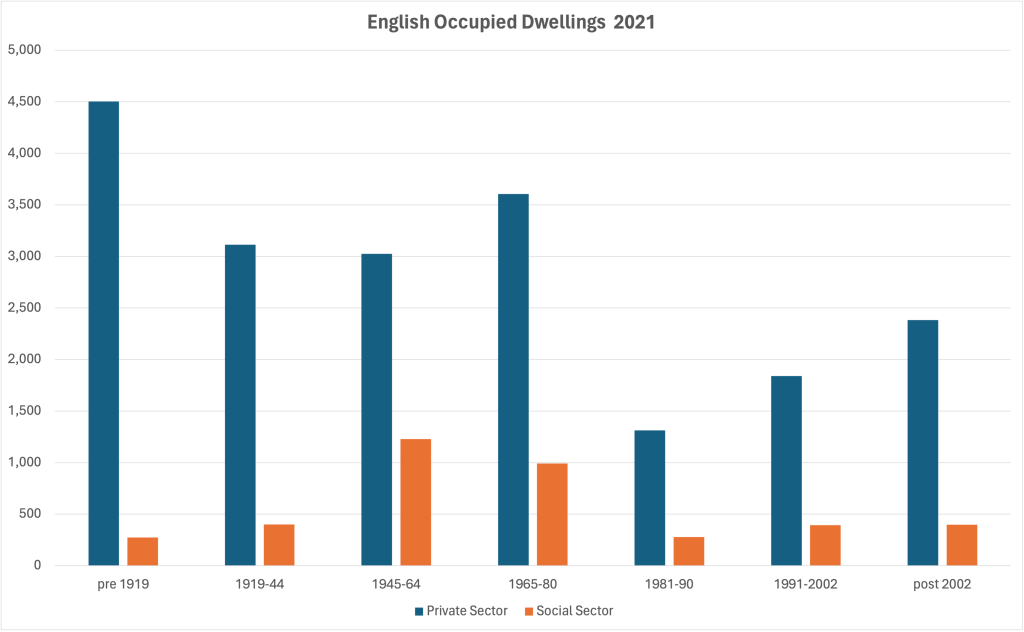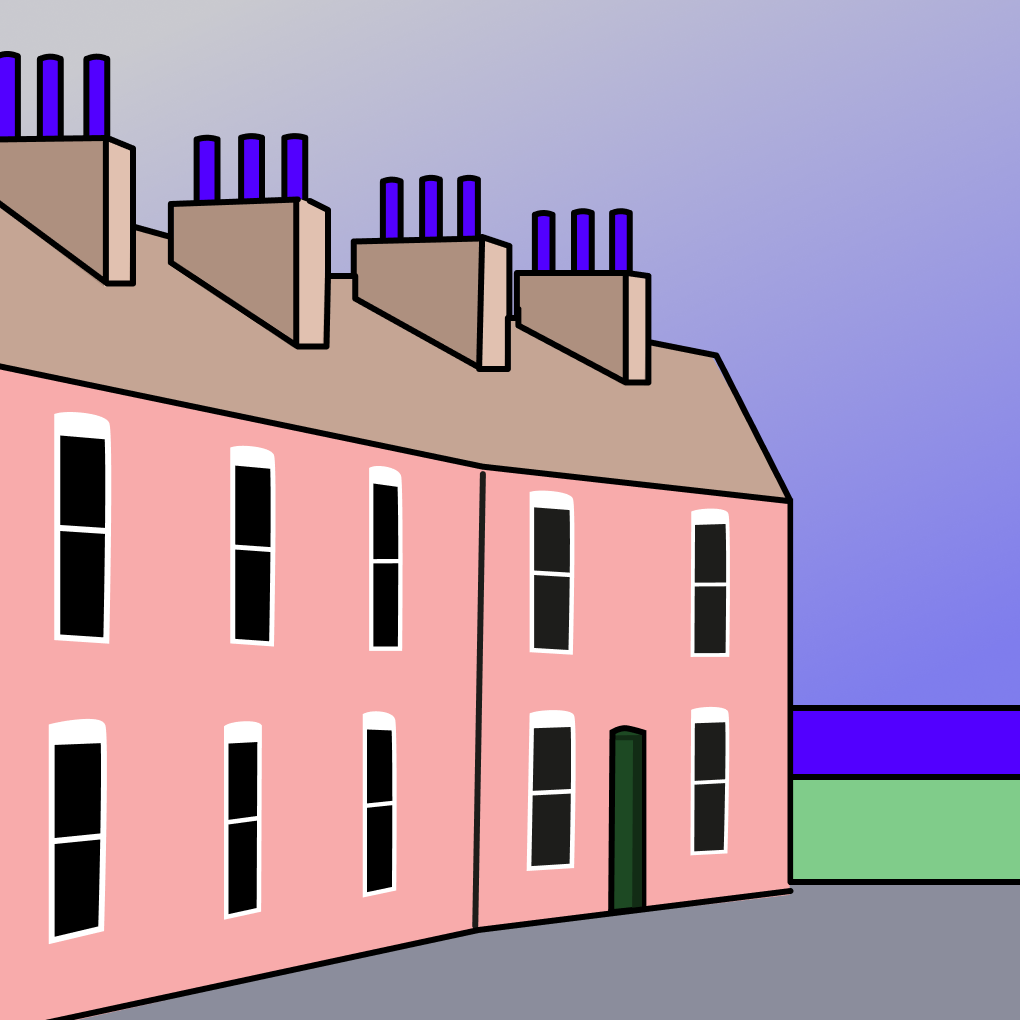Is it possible to use air source heat pump in an older house?
Yes you can use an air source heat pump in an older house. But you will probably have to make some big investments in improving your insulation, your windows and doors and the size of your radiators. These can add a lot to the cost of installation.
Because heat pump systems generally run at a lower flow temperature than gas boilers it is very important to not let any heat escape. This means that you’ll have to ensure your house is very energy efficient. Heat pumps are designed to run in well-insulated homes. Newer homes have a lot of this efficiency built in, but older homes do not. Because of this, running a heat pump in an older house can be a challenge.
Some heat pumps are designed to run at higher temperatures. These can be a viable solution for older homes. However they are generally more expensive to buy and install.
In this article we’ll look at the practicalities of using an air source heat pump in an older house.
How heat pumps work
At the basic level, heat pumps take heat from the outside your home and distribute it inside. Air source heat pumps take this heat from the outside air, while ground-source heat pumps take it from the ground outside.
An air to air heat pump (direct expansion heat pump) distributes this heat into your home by blowing warm air into it. The great advantage of these types of system is that they can generally blow cold air in the summer – just like an air conditioning unit. The big disadvantage is that they will not heat your hot water tank. You will need another solution to do this, like a traditional gas boiler (gas furnace).
These types of heat pumps are very popular in the USA and continental Europe, but less popular in the UK.
Air to water heat pumps use the heat gathered outside your home to heat water inside it. The system then uses this hot water to heat your home via radiators or underfloor heating. They are the most common type of heat pump in the UK – partly because in some cases they can easily replace a natural gas boiler.
Differences between a heat pump and a boiler
Heat pumps are more efficient that gas boilers
Heat pumps can be up to 5 times more efficient than a gas boiler at producing heat. We measure their efficiency using something called the seasonal coefficient of performance.
A typical heat pump has a SCoP of between 3 and 5. This means that for every unit of energy the heat pump consumes it will output between 3-5 times that in heat. A gas boiler on the other hand will only product 90% of the energy it consumes in heat.
This is all great news if you’re looking to reduce your energy bills and your carbon footprint. However there are fundamental differences between gas boilers and heat pumps. You will need to know these if you’re thinking of installing a heat pump in your home – especially in older houses.
Heat pumps run at much lower flow temperatures than gas boilers
A typical gas boiler will run at around 65/70°C – meaning it will produce water heated to this temperature. While some air to water heat pumps can run at a flow temperature of 65°C, they don’t tend to be very efficient at that temperature. You will get much better results by running them at 40/45°C. Similarly an air to air heat pump will not produce the same level of heat as a typical gas boiler.
This has a lot of implications that we’ll examine further down. But sufficed to say, with heat pump installation an old homes, you will need to concentrate on two things.
- Making sure enough heat is circulated around your home to reach a comfortable temperature
- Making sure the heat is retained within your home.
Heat pumps are designed to run continuously
In the UK we are used to setting our gas boilers to come on in the morning and the evening. Heat pumps are generally designed to run continuously and provide a constant low level of heat. While the actual motor unit of your heat pump will start and stop according to the heating needs of your home, the unit should be left on.
This means you will need to approach heating your home in a different way than you may be used to.
What kind of older house do you have?
The UK has a lot of older homes within its housing stock. According to the English Housing Survey (2021-2022), around 23% of private homes in England were built prior to 1919.
Older buildings tend to be much less energy efficient than new homes. In 2021-2022 there were 2.4 million households living in a home with an energy efficient rating of E to G. As we’ll see later in this article, if you live in a house with a low energy efficiency rating it will have a huge implication on how well a heat pump will perform. This is generally due to how well your home retains heat. But it is also due to how your system circulates heat within your home.
For the purposes of this article we’ll consider any property type built before 1980 as an ‘older home’. This is the time when modern building methods such as cavity wall insulation and double glazing became commonplace.
Quite shockingly, around 72% of English homes were built before 1980. So if you do live in an ‘older house’ don’t panic. It may take some additional work, but you can get a heat pump to perform effectively in period houses.

Minimising heat loss in an older house
The first thing to think about with an older home is how to minimise heat loss. There are several key ways we do this:
- External wall insulation
- Loft insulation
- Window and door efficiency
External wall insulation
Really old houses built prior to 1919 were generally constructed with a solid external 9 inch brick wall (single skin). This has extremely bad energy efficiency and lets out a lot of heat due to poor insulation.
Wall cavities became commonplace in the 1920s, and insulation between the two cavity walls became commonplace after the 1970s. It’s been compulsory for new builds since the 1990s.
There are some options to upgrade your insulation in old buildings. If you have a single skin wall you can put extra insulation inside the house or on the outside. However this can be quite disruptive. If you have non-insulated cavity walls, you may be able to inject insulation into the cavity from the outside. There are specialist firms that do this.
Loft insulation
According to the Energy Saving Trust, a quarter of heat is lost through the roof in an uninsulated home. Most of us have already insulated our lofts. But modern requirements are much more stringent than the past. As this is an easy change to make, ensure you have the optimum amount of insulation in your loft (around 270mm).
Windows and doors
The UK government estimates that 18% of heat loss occurs through windows. It also estimates that 7% of UK households have no double glazing.
If you have single glazing it’s imperative that you replace this with modern double glazing before installation of a heat pump. Even if you do have double glazing you may still want to replace it. The performance of double glazing has increased enormously since it was first introduced in the 1980s.
Similarly you must replace any old, badly fitted doors in your home. Heat can escape through the cracks around the doors, but also through the doors themselves.
Maximising energy distribution in an older house
As we discussed above, an air to water heat pump will run at a lower flow rate than a traditional gas boiler. Because of this we will need a larger convection area to get the house to the same temperature. Typically this will involve installing larger, more powerful radiators and/or underfloor heating systems. Both of these solutions allow a much greater heat distribution over large surface areas.
Although some homeowners have got away without replacing their radiators, this is unusual in older homes. Older homes tend to have central heating systems installed many years ago and some kind of replacement is generally necessary. Generally speaking, the classic iron radiators you typically find in UK homes are not the best option. Aluminium radiators are much more effective. We’ve written further about underfloor heating and radiator replacement elsewhere on the site and we would encourage you to read further.
High temperature heat pumps and older houses
While most heat pumps do run at lower temperatures than traditional gas boilers, there are a number of ‘high temperature’ pumps on the market which run at higher temperatures. In some cases these can run at similar temperatures to a traditional heating system. They are often designed to be used in cold climates.
In the past these high temperature heat pumps were less efficient than normal models, with a higher energy consumption. However, this is not the case with the newer generation. The latest models can be as energy efficient as heat pump that work at low temperatures.
High temperature heat pumps are generally more expensive to buy. But they can be a good choice for old house heating. A big advantage with these types of system is that you may not have to replace your radiators. This makes for an easy installation and may pay for the additional upfront cost of the system.
Are you thinking about installing a heat pump in an older house?
If you’re reading this article it’s a pretty good bet that you’re thinking about a new heating system. The most common question that our readers have, especially if they live in an older home, is the potential cost of installing a heat pump. We have examined this in details for both air source and ground source heat pumps.
There are a number of Government grants in the UK that can save you up to £7,500 on the cost of a new heat pump installation. Please check out our guide to funding for more information.

